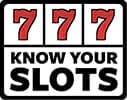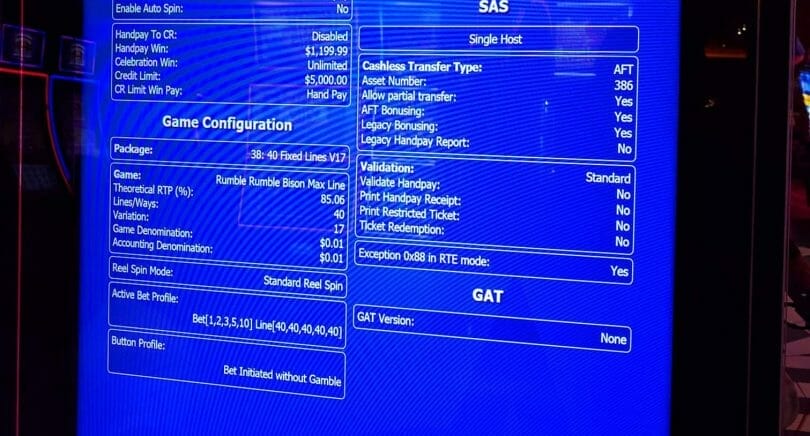I’ve spent quite a bit of time here in the past year talking about slot machine payback. I write about it a lot because it comes up a lot. Players have a lot of perceptions or notions about payback, and I’ve covered many of those topics in detail, including:
- Whether tribal gaming facilities have much lower paybacks
- Does time of day matter for paybacks?
- Does using free play matter for paybacks?
- Cruise ship paybacks vs. land-based casinos
- Do louder slot machines have a higher payback?
- Does using a players card or having a host impact payback?
- If you tier up in a players club, do you get a better payback?
- Do licensed games have a lower payback?
This isn’t all of them either. But all of these posts talk about specific scenarios, and I realized I’ve never done a full soup to nuts conversation about how payback options on a Class III (Vegas-style) slot machine even works.
So let’s get into that today and follow the progression that leads to what you encounter on the slot floor. If you think a casino just punches in the number they want and that’s that, you’d be mistaken.
Step 1: State Regulations
The first thing that is taken into account is state regulations. Each state where slots are legalized have their own rules governing slot machines and other games of chance.
When it comes to payback, many of them have minimum payback requirements per machine, although often times those numbers are laughably low compared to what you’ll normally encounter in a casino. In Nevada a slot must pay a minimum of 75%; in New Jersey, they must pay at least 83%.
Many states look to the regulations set by Nevada and New Jersey, as the oldest and most mature markets to legalize gambling, and tend to follow their lead, but minimums is an area where it does vary from state to state.
Step 2: Slot Machine Design
As my previous look into PAR sheets of a slot machine showed, slot machine design has an important impact on the final payback you see in a casino. This is because of how slot machines are developed.
Most slot machines are designed with a half dozen or so payback settings available. This is so the math can be verified accurately on each payback setting and any adjustments at each level can be tested.
Slot designers put a lot of time and effort in finding the exact balance they’re trying to accomplish with a game, and the payback being accomplished while still meeting the design of the game is critical to a designer.
They also want to protect the company and the game’s success by not allowing paybacks that would ruin the experience for players, turning them off to that game and perhaps others by the manufacturer.
So, those six settings are developed with a few criteria in mind:
- An acknowledgement of the various regulations across the states. In an ideal world, the machine’s design will allow it to get approved in as many markets as possible to avoid limiting the game’s potential.
- Offering a range of settings that will appeal to as many casinos as possible. This means offering enough diversity in payback choice to meet a casino operators’ average payback mandate.
- If a game is multi-denomination, making sure the range covers payback scenarios for both higher limit denoms and lower limit to satisfy any requirements there.
In practice, most slot machines will have payback settings in a range of 80-98%, and more likely 85-95%, with 2% or so increments between each choice.
Step 3: Casino Operators
For the casino operator, they’ll look at the PAR sheets to see what the payback options are (as well as other info like volatility), and will buy games that can meet their floor criteria in terms of things like payback.
While there’ll be a half dozen options, most casino floors have an overall payback target for a denomination and they’ll more often than not choose the setting closest to their overall target.
So if a casino floor has a 90% payback target on a denomination, and a game gives them 88.5% and 90.5%, they’ll probably choose 90.5% being closer to their target. And the next machine, if it’s 89.5% and 91.5%, they’ll choose 89.5%. With enough machines, enough time and enough spins, it’ll hone in on their number.
If a casino’s goal evolves, whether up or down, over time they’ll adjust machines’ settings to the new target.
So as you can see, payback isn’t a single decision but a series of decisions between regulators, slot designers/manufacturers and the casinos. Market forces, required minimums, and making sure games are fun all play a role in determining how much you get paid back over time.








